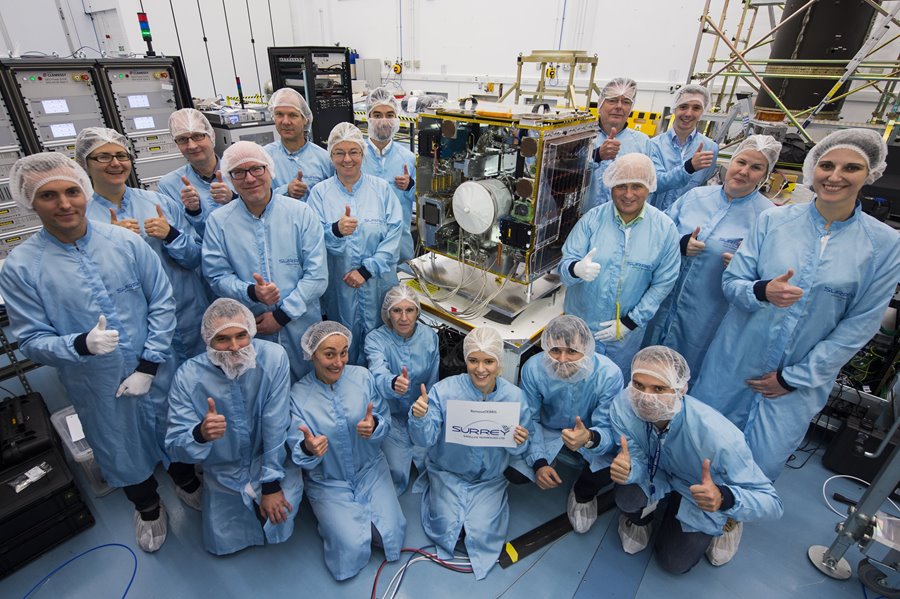
We are delighted to announce that the RemoveDEBRIS consortium has won two Awards! This is worthy recognition for the innovative RemoveDEBRIS mission which was launched in 2018 and has performed four active space debris removal technology demonstrations, testing novel technologies, representative of an operational scenario during a low-cost mission.
Aviation Week Network 63rd Annual Laureate Awards - SPACE - Technology and Innovation
Aviation Week's 63rd Annual Laureate Awards honor extraordinary achievements in the global aerospace arena and were announced on 19 November 2019. The winners of the 2020 Laureate Awards will be honored at a dinner in March 2020 in Washington, DC, where a Grand Laureate in each of the four categories will be named from among the winners.
Sir Arthur C Clarke Award for Space Achievement - Industry Project Team
The Awards, which are organised by the British Interplanetary Society, were announced at a Dinner during the Reinventing Space Conference in Belfast on Thursday 14 November 2019 and Professor G. Aglietti from the University of Surrey was able to take part via Skype from New Zealand, with SSTL's Martin Unwin in attendance to pick up the Award on behalf of the Consortium.
Mission success!
SSTL designed and manufactured the Remove Debris satellite platform which hosted the payloads for use in the debris removal demonstrations. These payloads, or technical content within them, were produced by mission partners Airbus, ArianeGroup, CSEM, Inria, ISIS, SSC, and Stellenbosch University. The RemoveDEBRIS spacecraft is operated in orbit by SSTL's engineers from our Spacecraft Operations Centre in Guildford.
Net: The deployment of a net developed by Airbus in Bremen designed to capture a target cubesat, was successfully completed on 16 September 2018. View video.
LiDAR: The mission successfully tested a vision-based navigation system from Airbus in Toulouse and CSEM in Switzerland that used 2D and 3D LiDaR technology to track a cubesat released from the main spacecraft.
Harpoon: In February 2019 a harpoon developed by Airbus in Stevenage was fired at 20 metres/second to penetrate a target made of composite material. View video.
Dragsail: Finally, the RemoveDEBRIS craft deployed a large dragsail to speed de-orbit into the Earth’s atmosphere.
SSTL's GNSS team was also recognised, being shortlisted in the same category for their work on the development of the GNSS Reflectometry Instrument flown on TechDemoSat-1 & NASA CYGNSS missions.
The Remove Debris mission received funding from the European Commission. Specifically, the research leading to these results has received funding from the European Union Seventh Framework Programme (FP7/2007-2013) under grant agreement #607099.